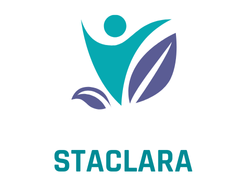Anxiety disorders impact millions, manifesting as overwhelming fear that can disrupt daily life. Understanding the symptoms—such as increased heart rate and feelings of impending doom—can empower those affected to seek help. This guide offers insights into various anxiety types, potential causes, and effective treatments, providing a pathway toward management and recovery. Take the first step by exploring how to understand and overcome your anxiety.
Overview of Anxiety Disorders
Anxiety disorders are a cluster of mental health conditions marked by persistent, excessive fear or worry impacting daily life. Exploration into these disorders highlights their debilitating influence, often resulting in individuals avoiding various daily activities. Such behaviors underscore the need for societal understanding of anxiety issues. Visit https://anxietychecklist.com/anxiety-disorders for further detailed information.
Have you seen this : Unlocking Recovery: The Impact of Peer Mentoring on Cutting Relapse Rates in Substance Abuse
Key Statistics and Demographic Insights: Approximately one-third of adolescents and adults in the U.S. will encounter an anxiety disorder in their lifetime. Prevalence rates vary, with specific phobias affecting about 12%, social anxiety disorder impacting 7%, and generalized anxiety disorder (GAD) affecting roughly 3% of the population. Notably, certain risk factors include a family history of anxiety, traumatic experiences, and chronic illnesses, which emphasize the complexity of these conditions across different demographics.
Understanding in Society: Grasping the intricacies of anxiety disorders is vital for addressing the profound ripple effects they generate on individuals and communities. Increased comprehension fosters empathy and the drive to seek early intervention, which can mitigate potential complications such as substance misuse or depression, thereby enhancing overall quality of life.
Additional reading : Exploring the Power of Virtual Reality Therapy in Overcoming Phobias
Types of Anxiety Disorders
Generalized Anxiety Disorder (GAD)
Generalized Anxiety Disorder (GAD) is marked by persistent and excessive worry about various life events. Individuals with GAD often struggle with an overactive mind, feelings of restlessness, and difficulty concentrating. This can lead to insomnia and fatigue, reflecting a constant state of alertness that disrupts daily life. It’s vital for those experiencing these symptoms to seek professional help to develop effective coping strategies.
Social Anxiety Disorder
Social Anxiety Disorder is characterized by intense fear of social situations, stemming from concerns about embarrassment or judgment. Those affected may avoid social gatherings, fearing negative evaluation. This disorder can significantly impact personal and professional relationships. Treatment often involves cognitive-behavioral therapy (CBT) to manage anxiety-triggering situations and promote positive social interaction skills.
Panic Disorder
Panic Disorder involves sudden episodes of intense fear, known as panic attacks, which can occur unpredictably. These episodes are accompanied by symptoms such as a racing heart, chest pain, and shortness of breath. People with panic disorder often live in fear of future attacks, which can lead to avoidance behavior. Medications and therapy, especially CBT, are effective treatment strategies.
Additional Types
Other common anxiety disorders include specific phobias, which are characterized by irrational fear of specific situations or objects, and separation anxiety, prevalent in both children and adults, involving a fear of being away from loved ones. Recognizing these conditions is the first step towards effective management and improved quality of life.
Symptoms and Diagnosis of Anxiety Disorders
Psychological and Physical Symptoms
Anxiety disorders often present a mix of psychological and physical symptoms. Common psychological signs include persistent worry, fear, and distress that can overwhelm daily activities. Physically, anxiety can manifest through symptoms such as increased heart rate, sweating, and gastrointestinal issues. These indicators can severely disrupt comfort and functionality in significant ways, calling for attention and awareness.
Behavioral Signs and Triggers
Behavioral signs often accompany anxiety disorders. Individuals may avoid certain situations, experience restlessness, or feel an intense urge to escape from perceived threats. Various triggers, such as stress and traumatic events, can exacerbate these behaviors. Recognizing these triggers can be crucial in managing anxiety effectively.
Diagnostic Criteria and Process
Diagnosis of anxiety disorders involves a thorough clinical evaluation. Medical professionals utilize criteria from the DSM-5 (Diagnostic and Statistical Manual of Mental Disorders) to assess symptoms and their impact. The process generally includes questionnaires and anxiety symptoms tests to evaluate severity. Ensuring a comprehensive diagnosis is pivotal in securing appropriate treatment and management plans, aiming to improve overall quality of life.
Treatment and Management Strategies
Psychotherapy Approaches: CBT and Others
Psychotherapy is a cornerstone for treating anxiety disorders, with Cognitive Behavioral Therapy (CBT) as a prominent method. CBT helps individuals recognize and modify negative thought patterns, effectively reducing anxiety by reshaping how they respond to stressors. Other therapeutic approaches, such as acceptance and commitment therapy (ACT) and dialectical behavior therapy (DBT), provide additional strategies to manage anxiety symptoms by promoting emotional regulation and mindfulness.
Medications and their Side Effects
Medications can be essential in managing anxiety, with several options available. Selective serotonin reuptake inhibitors (SSRIs) and serotonin-norepinephrine reuptake inhibitors (SNRIs) are commonly prescribed due to their efficacy. While beneficial, these medications may result in side effects like nausea, insomnia, or dizziness. Benzodiazepines, effective for short-term relief, carry a risk of dependency and are typically prescribed with caution.
Natural Remedies and Lifestyle Changes for Relief
Natural remedies offer complementary relief for anxiety symptoms. Mindfulness techniques, such as meditation and yoga, enhance relaxation and reduce stress. Lifestyle modifications, including regular exercise and a balanced diet, contribute to improved mental health. Limiting caffeine intake and practicing good sleep hygiene further support mental well-being, creating a holistic approach to managing anxiety.











